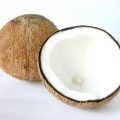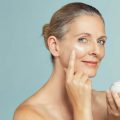If it is a concern of yours that you may lose the elasticity of your skin, there are ways to get that elasticity back. As we get older, the skin loses its elasticity, and this causes wrinkles and sagging skin.
There are a number of things that may cause your skin to lose its elasticity other than aging. These things may have something to do with your lifestyle and habits, as well as your diet and several other things.
Let us take a look at what may cause loss of elasticity, how to prevent it, and how to regain elasticity in skin.
What May Cause the Skin to Lose Elasticity?
Except for aging, which causes the skin to lose elasticity, there are other influences that make the skin sag, as well. You may not be aware of all of the factors to keep in mind. Here are a few of the most common things that may cause skin to lose elasticity or increase elastosis.
Sun exposure
If you are exposed to the UV rays of the sun for long periods at a time, it may cause elastosis. This is especially true for lighter-skinned people and can be avoided by minimizing exposure to damaging UV rays.
Smoking
Smoking tobacco will increase the production of tropoelastin fiber in the skin, as well as degradative enzymes. All these things will disrupt the natural and normal skin architecture, which will increase elastosis in the skin and cause many other problems.
Poor diet
Obviously, eating too much unhealthy food is not good for you, and it will also cause problems for your skin. It may cause the skin to have less healthy blood flow and that will increase elastosis.
Lack of exercise
A lack of exercise may also increase the chance of elastosis because of unhealthy blood flow in the skin. It is very important to do some amount of exercise on a regular basis for healthy blood flow.
As you can see, all these things that may cause your skin to lose its elasticity can easily be avoided. By simply changing your lifestyle to a more balanced routine, you can keep these problems at bay for longer.
How to Regain the Skin's Elasticity
Here are a number of ways to restore the elasticity of the skin.
Supplements
There are a number of supplements available that can help restore the elastin in the skin for young and old people alike. Free radicals are some of the main culprits in the loss of elasticity in the skin, but their effect can be countered.
Any type of antioxidant may help your skin regain elasticity and make your skin more supple and more flexible. Grape seed extracts, as well as resveratrol and many other antioxidants, can help in the restorative and healing process.
Vitamin C is also an antioxidant and will, at the same time, help increase the production of collagen in the skin. Omega-3 supplements will help maintain the elastin that is already available in your skin.
Tea
There are many different types of teas that have all the nutrients your skin needs to be healthy and supple. It has been found that green teas may increase skin thickness and may enhance skin cell renewal, which will help with skin elasticity.
Some of these teas will actively help resist the breakdown of the skin and also help retain the elastin. Plus, you do not have to only drink the tea, but you can also apply it to the skin of your face for a very good effect.
You can use tea bags and place them over your eyes after they have cooled down, or you could put them in a spray bottle. This can be used as a refreshing toner and can even be used as the base in a homemade moisturizer.
Argan oil
Many natural oils are excellent to use for the rejuvenation of skin, as well as for many other benefits. Argan oil is one of these natural oils that may help restore the elasticity of skin as well as moisturize it.
Researchers have found that, with the use of Argan oil as a supplement, you may see improved elasticity of the skin. When applying Argan oil as an anti-aging supplement, skin showed a great improvement of suppleness and elasticity.
Yogurt
Proteins are very important for the production of collagen and elastin in the skin and also for increased suppleness. Yogurt is high in protein and may help in the process of creating that much-needed collagen and elastin in the skin.
It can be consumed and used as a dietary supplement to fortify the protein of the skin from the inside. It can also be used as a mask and applied directly to the skin for improvement of the brightness and moisture of the skin.
Exercises
Regular exercise may improve the condition of your skin to make it look bright, and it may also improve overall skin health. Studies have shown that daily exercise may reverse aging of the skin and provide a much healthier outer skin layer.
Exercise will improve blood circulation and carry the necessary nutrients to the skin via the blood. This will result in much healthier skin. The quick delivery of the much-needed nutrients to the skin will help rebuild collagen and elastin in the skin.
It may sound like a huge undertaking to start a regular workout routine, but you can start slowly and build up gradually. Daily exercise will not only benefit your skin, but it will also improve your overall health. Plus, it will help you sleep better.
Conclusion
Hopefully, this will help change your view of aging skin and also help inform you how to get that elasticity back into your skin. It is always better to get professional advice on topics that concern the health of your body and overall health issues.
As you can see, a healthy lifestyle with a well-balanced diet will make a huge difference in your health.





